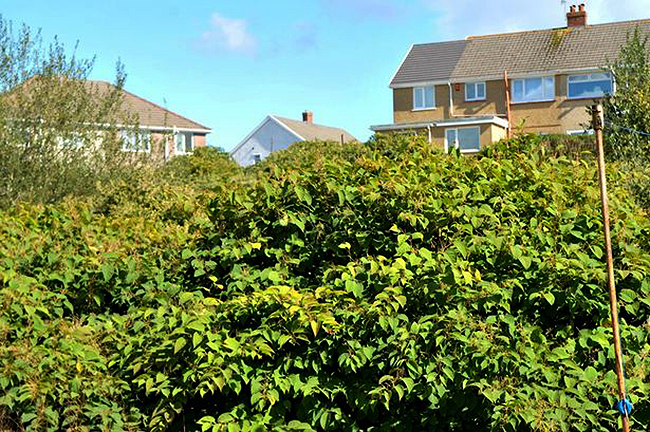Japanese Knotweed - What You Need To Know

Japanese knotweed, or Fallopia Japonica, was brought to Europe from Japan.
Introduced to the UK during the Victorian Era it was originally intended to be a low-cost feed for cattle. In 1847 it was named the most interesting new ornamental plant of the year by the Society of Agriculture and Horticulture this is a far cry from the invasive pest it has become widely recognised as today in 2014!
Japanese knotweed starts growing from early spring and can reach 1.5m by May and 3m by June, before dying back between September and November. Once established, Japanese knotweed can grow in size by 10 centimetres every day growing to 7m in height with roots of around the same length. It will force its way through any obstacle in its path. Tarmac, masonry, underground pipes, drains and building foundations are no exception.
So What Does It Look Like?
Fleshy red tinged shoots when it first breaks through the ground.Large, heart or spade-shaped green leaves.Leaves arranged in a zig-zag pattern along the stem.A hollow stem, like bamboo.Dense clumps that can be several metres deep.Clusters of cream flowers towards the end of July that attract bees.
What Are The Best Methods To Treat Knotweed?
In Japan it does not grow so fiercely due to the volcanic landscape and regular deposits of ash, knotweed plants remain small. In Britain we are without these impediments therefore it continues to grow unabated. It has no natural predators and swamps other plants in their quest for natural light. There is not a six-mile square patch of the UK that does not harbour the destructive plant!
The traditional approach of cutting down the plant makes the problem even worse - a single piece of Japanese knotweed is capable of quickly producing another plant. If you have attempted to dig it up or cut it back do not compost it or dispose of it at local recycling plants as it will contaminate any soil it comes into contact with as even the smallest fragment is capable of regenerating into a new plant!
The Most Effective Method Of Eradicating It Is By Using Herbicides
Knotweed costs the UK economy £166 million per year for treatment and in home devaluations. Strict laws surround Japanese Knotweed. If the invasive Knotweed has caused damage or has not been disposed of correctly in accordance with the Environmental Protection Act homeowners and business owners will find themselves footing the bill
If you found guilty of not attacking a Japanese knotweed problem you will now be liable for a ‘Level 4’ fine under the new legislation, this stands at a whopping £2,500. Business owners come off far worse with a fine almost 10 times more severe, set at between £20-25,000!
If you have spotted Knotweed in your garden the safest method of removal is to call a professional. Call Sankeys today and one of our specialists will be able to assist you.

